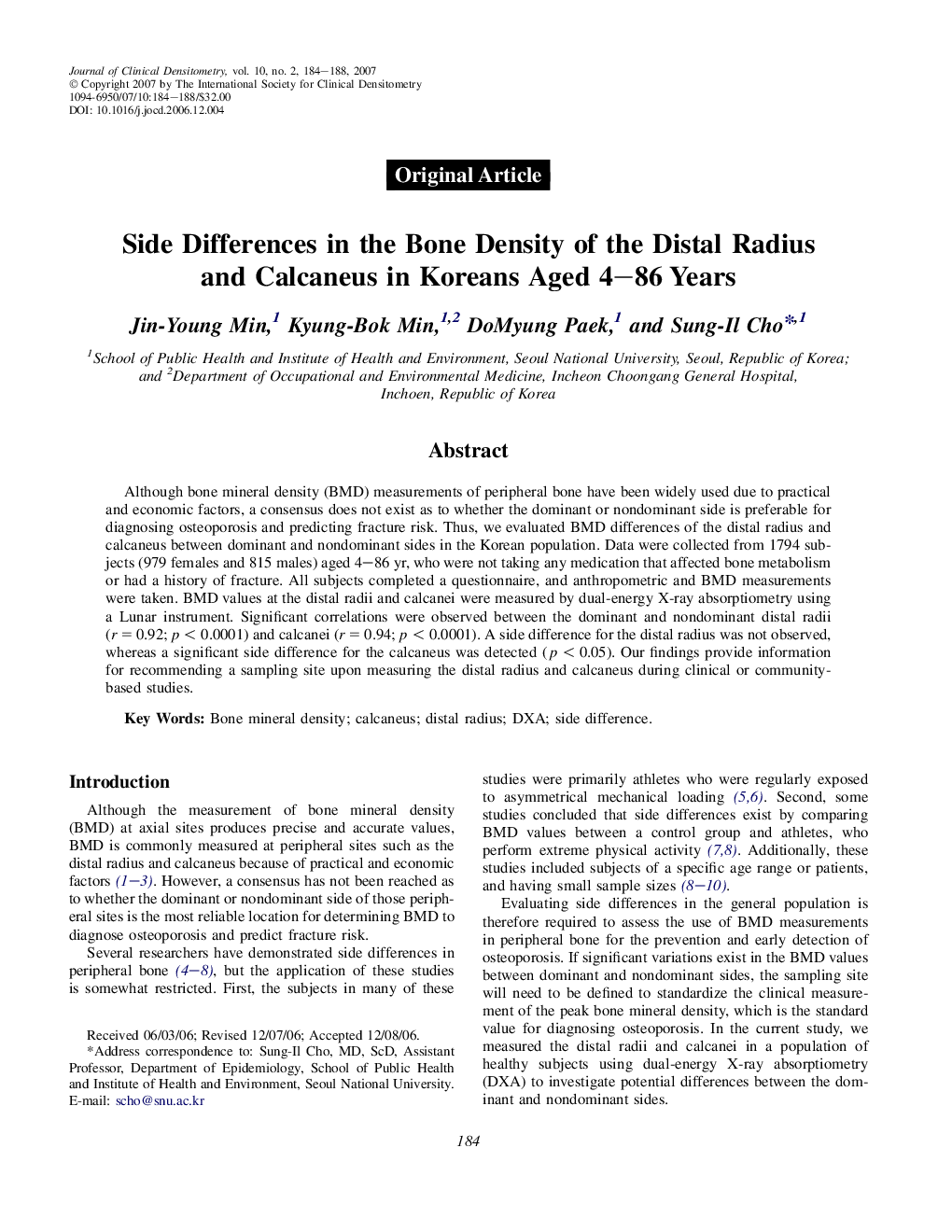| Article ID | Journal | Published Year | Pages | File Type |
|---|---|---|---|---|
| 3271731 | Journal of Clinical Densitometry | 2007 | 5 Pages |
Abstract
Although bone mineral density (BMD) measurements of peripheral bone have been widely used due to practical and economic factors, a consensus does not exist as to whether the dominant or nondominant side is preferable for diagnosing osteoporosis and predicting fracture risk. Thus, we evaluated BMD differences of the distal radius and calcaneus between dominant and nondominant sides in the Korean population. Data were collected from 1794 subjects (979 females and 815 males) aged 4-86 yr, who were not taking any medication that affected bone metabolism or had a history of fracture. All subjects completed a questionnaire, and anthropometric and BMD measurements were taken. BMD values at the distal radii and calcanei were measured by dual-energy X-ray absorptiometry using a Lunar instrument. Significant correlations were observed between the dominant and nondominant distal radii (r = 0.92; p < 0.0001) and calcanei (r = 0.94; p < 0.0001). A side difference for the distal radius was not observed, whereas a significant side difference for the calcaneus was detected (p < 0.05). Our findings provide information for recommending a sampling site upon measuring the distal radius and calcaneus during clinical or community-based studies.
Related Topics
Health Sciences
Medicine and Dentistry
Endocrinology, Diabetes and Metabolism
Authors
Jin-Young Min, Kyung-Bok Min, DoMyung Paek, Sung-Il Cho,
